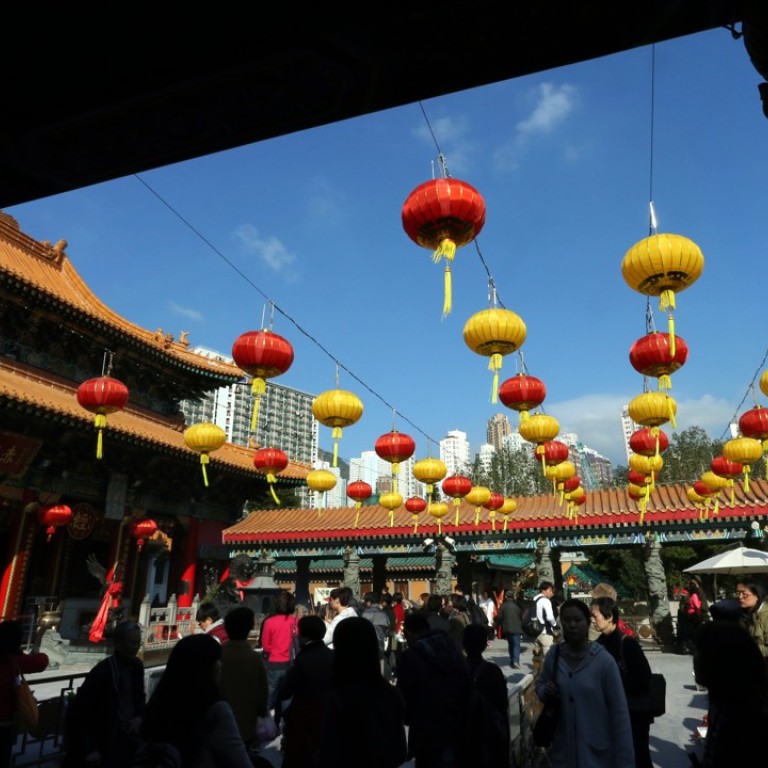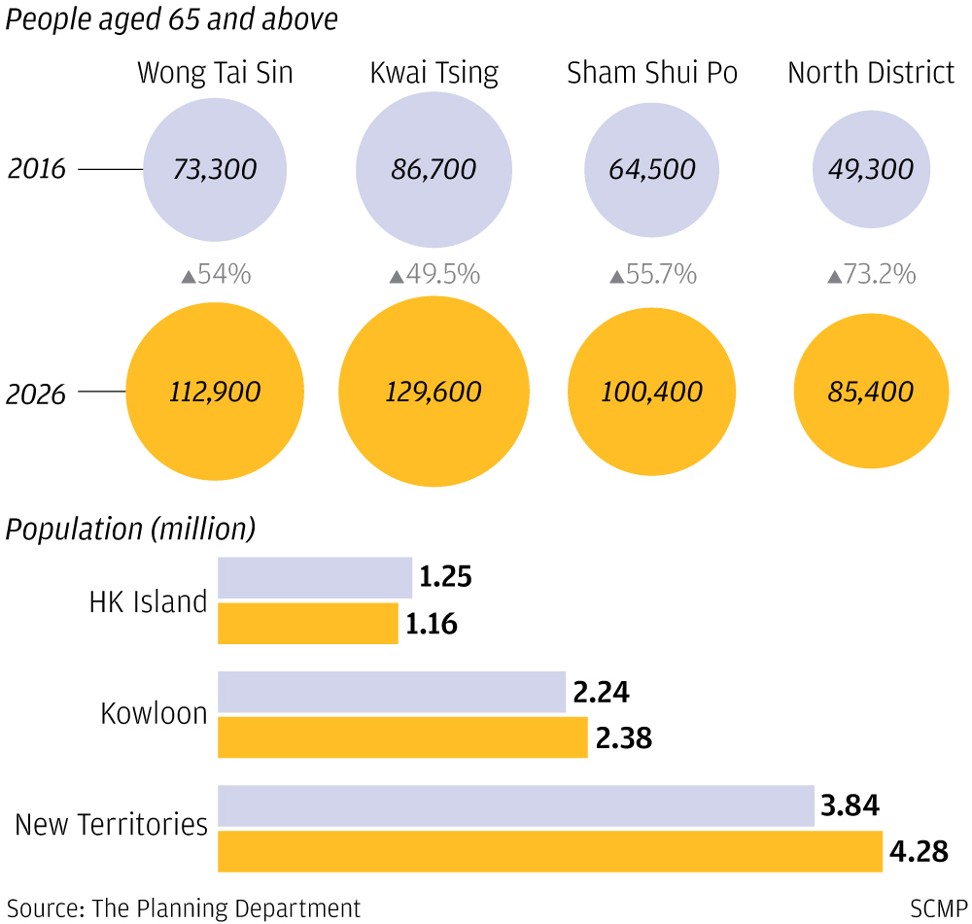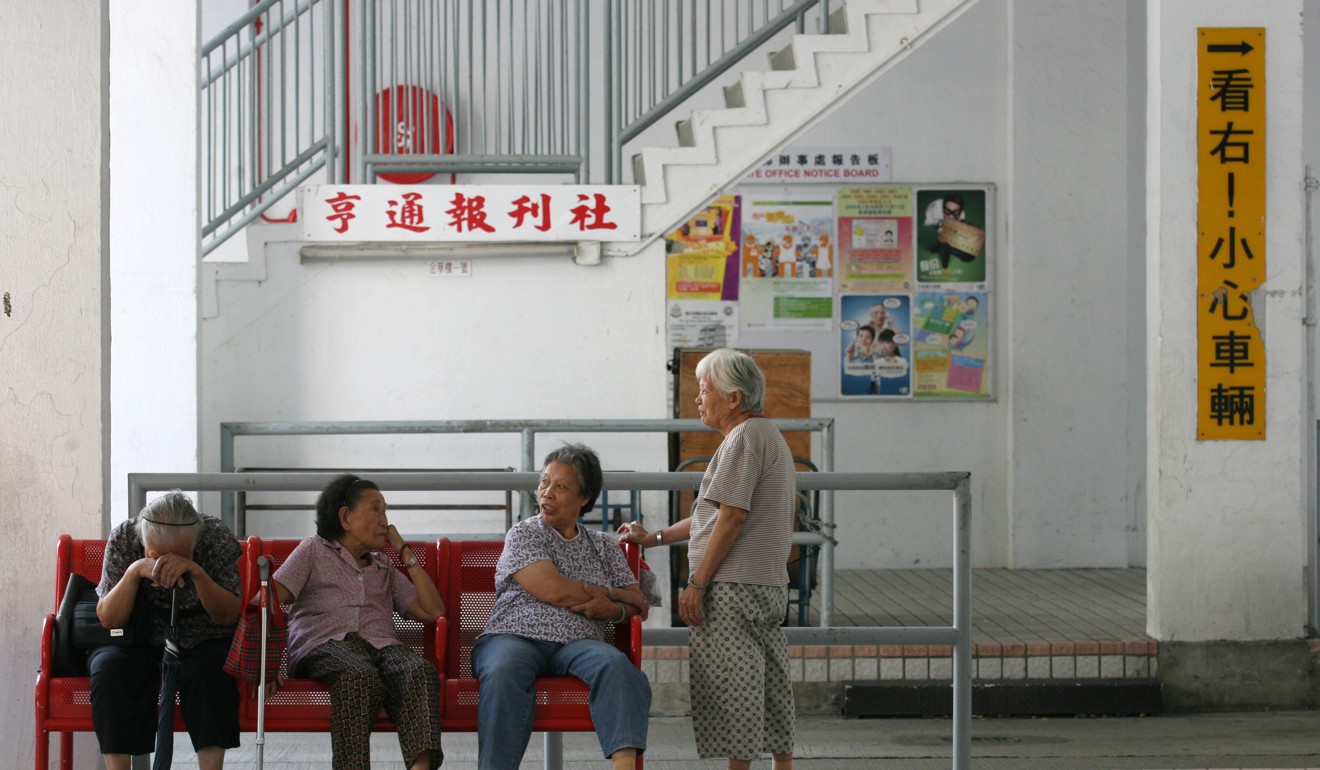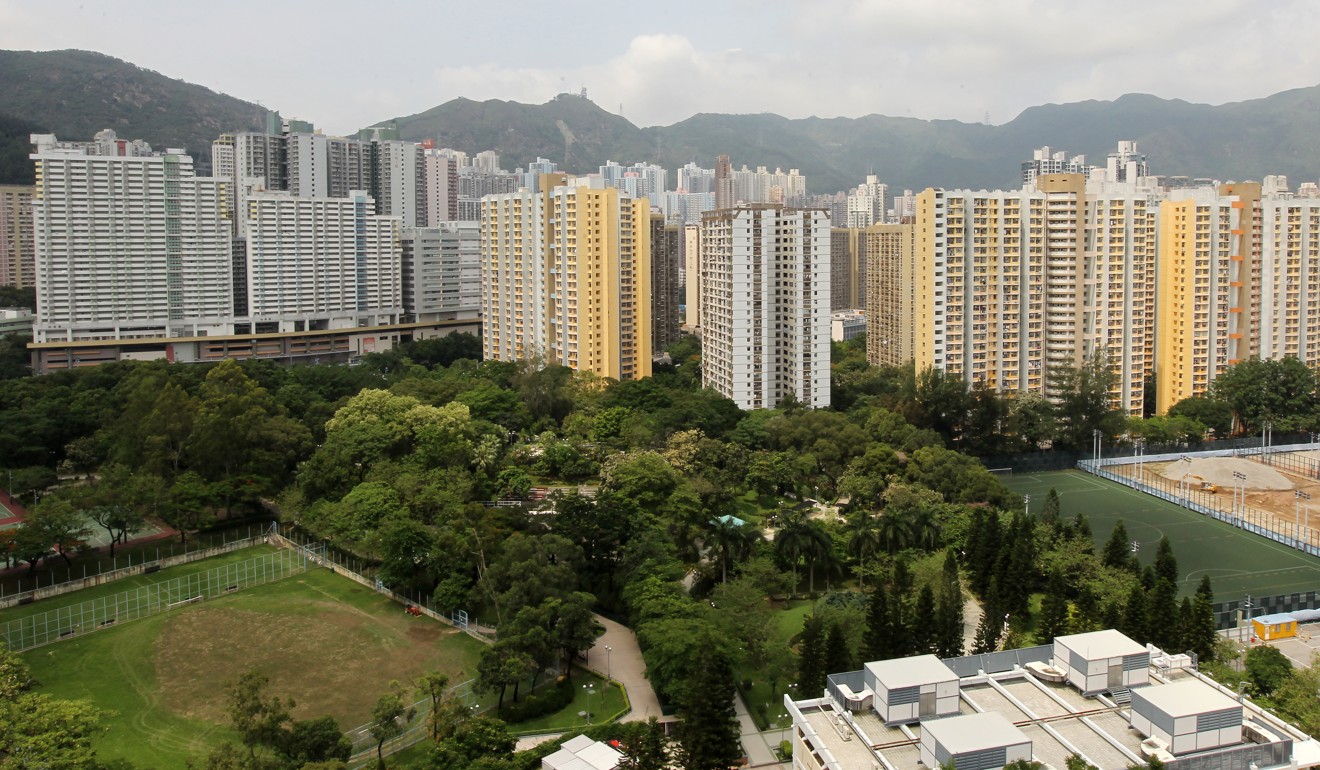
Kowloon’s Wong Tai Sin neighbourhood is on pace to become Hong Kong’s most elderly district
Latest projections show city’s population will grow by about 7 per cent by 2026, with the majority of residents living in Kowloon and the New Territories
In eight years’ time the working class neighbourhood of Wong Tai Sin in Kowloon will be Hong Kong’s most elderly district, with one in four residents there older than 65, according to the latest population projections by the city’s Planning Department.
Released on Friday, the projections also show slight variations in where the population, expected to increase by about 7 per cent to 7.33 million people, will live by 2026.
Fewer people – 1.16 million, or about 15 per cent of the population – will live on Hong Kong Island, home to the city’s central business and shopping district and some of its wealthiest neighbourhoods.
About 30 per cent will be in Kowloon and the rest in the New Territories. Property tycoons have built the bulk of new flats in these two areas, while in the latter area the government is looking to develop large swathes of land into new towns.
The figures prompted district councillors and housing researchers to warn of shortages in elderly services and public housing.

In Wong Tai Sin, best known for having a famed heritage temple that people visit to ask for their wishes to be granted, about 26 per cent of the 433,900 residents there will be aged above 65 in 2026, and it will have the lowest proportion of under-14s among all 18 districts citywide.
With more elderly households and people aged above 80, can Hong Kong cope with its greying population?
“The Our Lady of Maryknoll Hospital in our district is going to be renovated, but no overnight medical services are promised by the Hospital Authority,” district councillor Wu Chi-kin said, adding that at night, elderly residents in need had to call an ambulance from the Queen Elizabeth Hospital in Yau Ma Tei, Middle Kowloon.

Wu also said there was a shortage of day care centres and residential service centres for the elderly, and a number of public housing estates in the district were yet to have their facilities improved for the ageing residents.
“The Choi Hung Estate has a history over 50 years where elderly centres are not enough and roads have become unlevel,” Wu said. “Many old residents are waiting for redevelopment but the government hasn’t rolled out any plan.”
What elderly shoplifters in Hong Kong reveal about dementia care
After Wong Tai Sin, Kwai Tsing will have the next largest proportion of elderly, with 24.9 per cent of residents older than 65.

In Kwun Tong, the completion of new public and private estates across the 11.05 sq km district will deliver a sizeable population increase to 721,000, beating Sha Tin, which is three times its size.
For example, a 12-hectare site on Anderson Road is expected to house 25,000 people in 9,400 private and subsidised flats when all phases are completed. Residents began moving in last year.
Bunny Chan Chung-bun, chairman of the Kwun Tong District Council, expressed concerns that the population increase would exacerbate problems in an already congested district.
“Transportation in the Kwun Tong area is already very congested; plans for a new road have dragged on for 10 years. Hopefully we will be able to get funding from the Legislative Council and have it built as soon as possible,” Chan said.
What worries Ryan Ip Man-ki, a senior researcher with the think tank Our Hong Kong Foundation, is the housing supply, given the estimated population increase of 490,000 residents.
Dementia, poverty or a cry for attention? Shoplifting cases among Hong Kong’s elderly on the rise
According to data from Midland Realty, at least 87,000 new flats are expected to come on the market in the next five years and beyond, 66 per cent of which will be in the New Territories.
Ip said housing in both the private and public sector was still lacking across the city.
“The situation is particularly serious for public housing,” Ip said.
The government has admitted it had only identified enough land to build 237,000 public flats by 2027, leading to an expected shortfall of 43,000 flats.
Ip said in the short term, the government should focus on increasing building density and develop brownfield sites, while land reclamation outside Victoria Harbour was the “most effective” long-term strategy to boost land supply.


